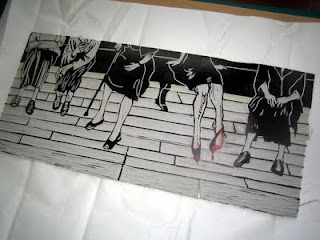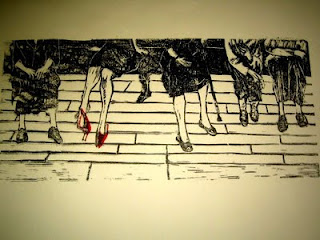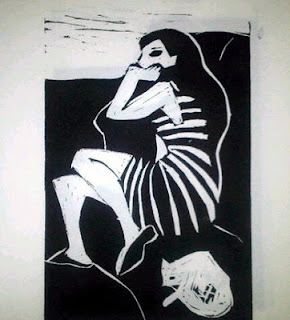Update: the finished print. Well, nearly. I need to think about how I will make the shoes red. Maybe I'll paint them, or a technique called Chine collé.
After seeing
Kneehigh's beautiful, spectacular, dark, twisted, funny cabaret based on Hans Christian Anderson's story of the Red Shoes, it gave me lots of ideas for prints, which maybe one day I will have time to embark on...
In the meantime, I thought I'd do a linocut, which is the simplest idea. Here are some photos of each stage. It's still not finished but this gives an idea of the process.
When I was thinking of the story, what seemed to come through most vividly was Karen sitting in church, unable to stop thinking about her red shoes. There are old ladies in the story and I pictured her sitting in church, a young girl surrounded by disapproving old women. For me the story is about her blooming into a woman, and other people trying to dampen down her sexuality (maybe for Kneehigh too - they changed the old soldier in the original story into an handsome young soldier who tries to seduce her.)

1. Drawing out the design on the lino.

2. Lino all cut. It takes a while.

3. Printing the red shoes in red first.

4 Inking up the rest of the plate with black ink. This is the most exciting bit (after pulling the print) because you see your image come to life as the ink runs over it.

5. The print. This was printed by hand burnishing with a metal spoon, but it gives me an idea what it will look like when it goes through the press. You can see some problems with registration (red not in the right place) and I think the paper moved, which causes the blurring. But still quite happy with it overall.




